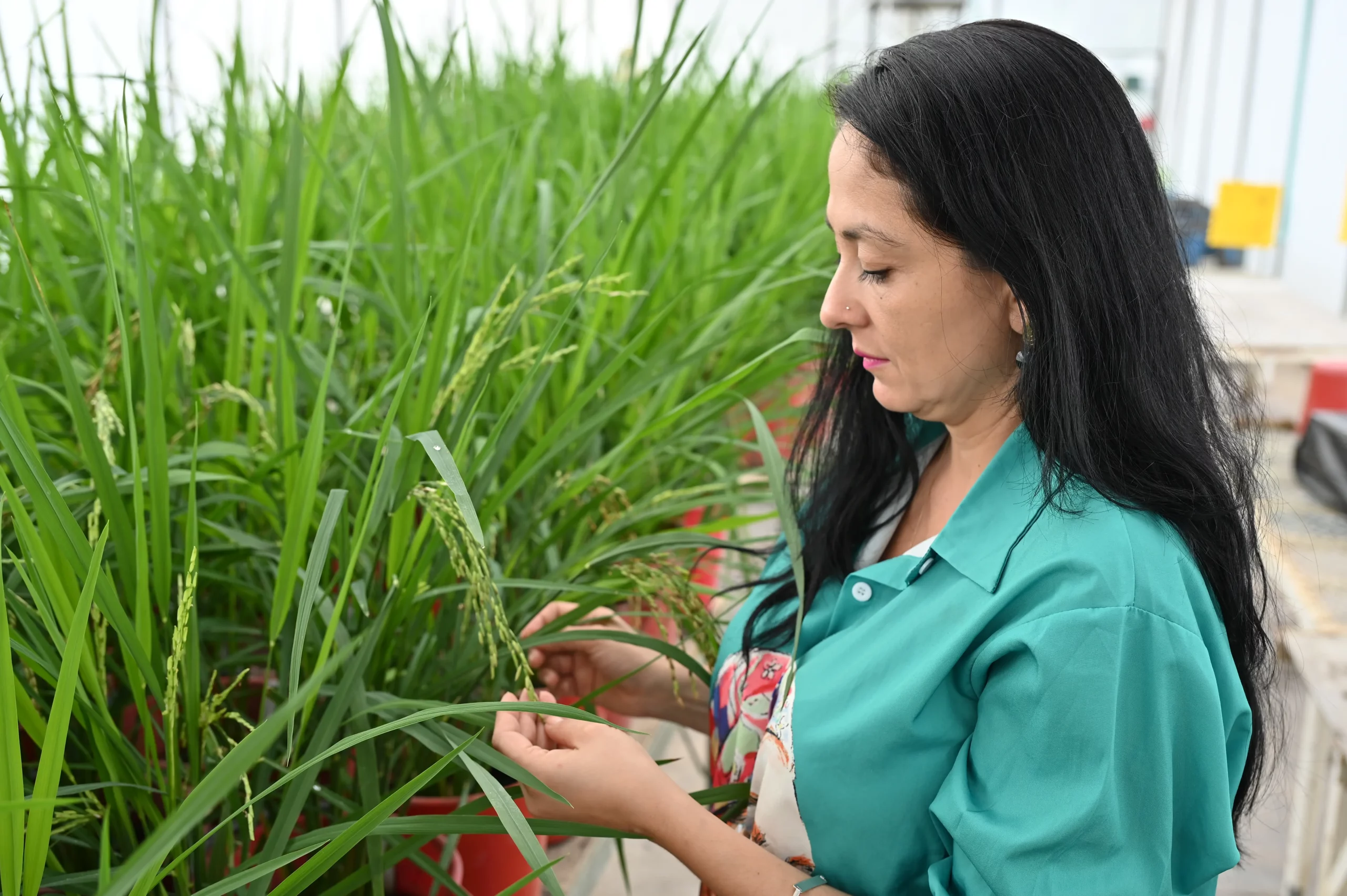Last Update 5/23/2024
Impact of Gene Editing
The Gene Editing Platform (GEP) uses CRISPR-Cas technology to produce innovative germplasm with desirable traits that meet user demand, from breeders to consumers, addressing the agricultural challenges of climate change, food security and crop value chains. We support crop improvement research in areas such as phytopathology, genetics and physiology, among others, for crops such as rice, cassava, cocoa, beans and forages. Within the carbon sequestration project, GEP’s main objective is to convert rice into a more efficient atmospheric carbon sink, without affecting its production, by obtaining edited lines of genes involved in carbon capture and/or storage, which can be converted into new varieties or used as progenitors for breeding.
Our innovative approach
We use CRISPR-Cas9 to make precise changes in genes of interest. The Cas9 enzyme, guided by a specific RNA sequence, cuts the DNA generating insertions, deletions or substitutions during its repair, modifying the gene of interest, allowing to obtain the desired characteristics.
Outcomes / Outputs
Since 2023, we have focused on editing two rice genes: a hexokinase (OsHXK1), a regulator of the concentration of sugars produced by photosynthesis, and an auxin transporter (OsAUX1) involved in the flow of auxins in the plant. Three targets/gene were designed to create mutations in both genes individually, using CRISPR-Cas9 to inactivate them in indica and japonica genotypes. We have produced over 400 putatively edited lines for each gene and are in the process of molecular analysis to identify those mutants of interest.
Future steps
Once the mutants of interest have been identified, we will eliminate the transgene by segregation in the greenhouse, and then we will carry out phenotypic evaluations in a confined field to measure agronomic and physiological traits such as sugar concentration, chlorophyll content, biomass, root length, number of panicles, etc.
From this exercise, the best candidates will be selected to request their declaration by the ICA as conventional breeding lines, and to test them in other environments with a view to establishing them as parents and/or varieties.
Contact
Sandra Patricia Valdés
Senior Research Associate
Gene Editing Platform
s.p.valdes@cgiar.org
Gallery
Publications
Efficient Agrobacterium-mediated Transformation of the Elite–Indica Rice Variety Komboka

The Alliance of Bioversity International and CIAT is part of CGIAR, a global research partnership for a food-secure future.
Contact
Alliance of Bioversity International and CIAT
Latin American Hub
Palmira – Colombia
Address: Km 17 Recta Cali-Palmira
Phone: (+57) 6024450000










